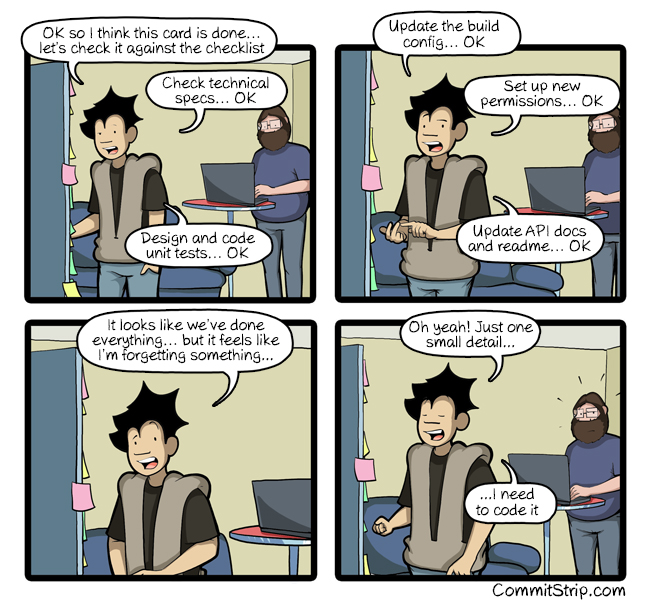From time to time conversations come up among developers, and other fellow travelers, about being self-taught vs getting formal training. Over time I’ve come to realize that the further and further you get into your career, the less the distinction means anything; eventually we are all mostly self-taught.
I’ve written before about the value of my liberal arts education and I stand by my assertion that what I learned in that setting was, and is, valuable to my life and work. But just because something was useful to life does not mean it was the only way to acquire the skills. It’s a good way for many people, but far from the only way.
For anyone in a technical field, and most professional fields really, to succeed over time you need to learn new tools, skills, and techniques. The tools I knew when I graduated college are all largely outmoded or significantly upgraded, and I’ve had to learn a variety of technologies that didn’t exist in 2001.
Within the Drupal community lots of people talk about being self-taught, sometimes with pride sometimes with embarrassment, but in truth very few people were formally trained on the platform. Lots of very successful developers in the Drupal community (and beyond) have degrees in fields like religion and art history, not computer science, and have taught themselves how to do awesome things. In fact, I’ll argue that just about every Drupaler taught themselves most of what they know about Drupal. How they did that can vary widely, but we are a community with few formal training programs and lots of people who stumbled into Drupal trying to solve a non-technical problem. Even advanced workshops at conferences dig deep into one small area and expect you to generalize that knowledge to your projects, which I count as self-teaching. For example, I had a friend ask the other day about how to control the PDO connection settings in Drupal 7 — which I didn’t know how to do, but knew they were similar to Drupal 8 — so I sent him my Drupal 8 instructions and he figured it out how from there. He’s now taught himself how to do what he needed for that project and in the process generalized the approach for whatever he may need next time.
So then it is important for all of us to find, and hopefully share, techniques for self-teaching — even for those who have some kind of formal training. Here are my suggestions for people who are starting out and haven’t yet found the pattern that works for them:
- Assume you first solution is wrong. Most of us have, or will, stumble our way through a project where we don’t really know what we’re doing without a lot of support. We usually learn a great deal in the process, and launching those projects can feel pretty good cause you’ve succeeded at something hard. It is easy to get into the habit of assuming the solutions from that project were correct because they worked. In truth those projects are really rough around the edges, and just because we got it to work does not mean the solution was good. Assuming the first solution is good enough forever is how you become an expert beginner which then takes a lot of effort to undo. Once you have a working solution, step back and see if you can think of a better one, or see if you now can guess better search terms to see if someone else wrote up a different solution to the same problem. Admit your work could be better and try to improve it.
- Learn a few more programming languages. Most people who are self-taught from the start, and even some who have a BA/BS in Computer Science, only know 2 or 3 programming languages (PHP, JS, and CSS+HTML are often the only languages new people learn at first). One of the courses I took by chance in college forced me to learn 8 in 16 weeks. It was grueling, miserable, and darned useful. I can still learn a new language in just a couple weeks and rarely do I hit a language construct I don’t recognize. You don’t need to go that far. When I first started out a mentor told me you should learn a new language every year, and for several I did. Some of those, not the languages I learned in college, are the ones I use most day-to-day. All told I’ve spent time writing code in more than twenty different languages. That many isn’t terribly useful but the more languages you learn, the more you learn to understand the elements of your primary language.
- Learn basic algorithms and to measure complexity. The kind of thinking that goes into formal algorithms will help you be a better developer overall; badly thought through processes is the place I tend to see the largest gaps between developers with and without formal training. Any college-level CS program will put you through an algorithms course that teaches a variety of specific algorithms and force you to understand their structures. If you didn’t go through one of those programs, this is probably the course that will help you the most. On the one hand most of us rarely rewrite these algorithms as on modern platforms some library or another will provide a better version than we are likely to craft for our project. But learning what they are, when they are used, and how to understand their performance is useful for any project that involves lots of data or processing. MIT has a version of their algorithms course from 2011 online, or find one through another provider. Even if you just watch the lectures (really watching, not just vaguely have them on while cooking and cleaning), you can learn a great deal of useful information. I learned a lot watching those lectures as it refreshed and updated my understanding of the topics.
- Find and learn from mentors. Notice I used a plural there; you should try to find a few people willing to help you learn your profession, and more generally help you learn to advance in your field. Most of us benefit from learning from the experiences of multiple people, and who we need to learn from changes over time. I had the great experience of having a few wonderful mentors when I was first starting out, and much of the advice they gave me still serves me well. Some of it contradicted, and resolving those contradictions forced me to learn to do things my own way and find my own solutions.
- Learn other platforms. This is both a protection against future shifts in the market, and also a way to see how things work from outside your current professional bubble. Drupal developers can learn a lot from writing a WordPress plugin, or better yet an add-on for a platform in another language (think about Plone, Gatsby, or Hugo). Or try to learn to work with a platform like Salesforce or AWS. Other platforms have different communities, different learning styles, and different patterns. Like understanding additional languages, different platforms help you broaden your understanding and provide insights you can bring back to your main work.
- Learn to give and take criticism. Part of learning is getting feedback on your work, and part of being on a team is sharing feedback with others. If you took art or music classes in high school or college you probably learned some of the basic lessons you need here, but if you didn’t, consider taking one now at your local community college or art center. The arts are wonderful for getting experience with criticism. For all art is often open to interpretation, it also requires specific skills. If you play off-key, it sounds wrong. If your sculpture collapses under its own weight, the project failed. If your picture’s subject is out of focus, you need to re-shoot it. Sure there are brilliant artists who can violate all the rules, but if you have never experienced an art critique you are not one of those artists. The experience of getting direct, blunt, and honest feedback will help you understand its value and how to give that feedback yourself.
- Share what you think you know. We learn a great deal with we teach others. Both because it forces us to refine our thinking and understanding so we can explain it, and because learners ask questions we cannot answer off the top of our heads. This can be user group or conference presentations, internal trainings for your team, mentoring junior developers, writing a blog, or anything else that gets your from learning to teaching. It’s okay if you’re not 100% right, that’s part of how we learn. A few years ago I was doing a joint project with a junior developer who asked me a lot of questions, and pushed hard when she thought I was making mistakes. When she asked why I was selecting a solution or setting a pattern, she was never satisfied with “because that’s the best way to do it.” She wanted me to explain why that was the best way. If I couldn’t walk her through it right away, I went back and hunted for reference material to explain it or if that failed I tested her counter ideas against my plans to see if I was missing something. While I was usually right, not always and we did make changes based on her feedback. More importantly it forced me to show my work in fine detail which was a good exercise for me and gave her insights to help her do better work.
- Find your own patterns. At the start I said this list was for people who didn’t have their own patterns yet. In the long-run of your career you need to figure out what you need to know to get to where you want to go next. Eventually you will need to find a pattern that works for you and the life you are living. No one can tell you what that is, nor how to learn it all yourself. Experiment with learning styles, areas of work, roles, and types of projects as much as you are able until you feel your way to the right solutions for you.







